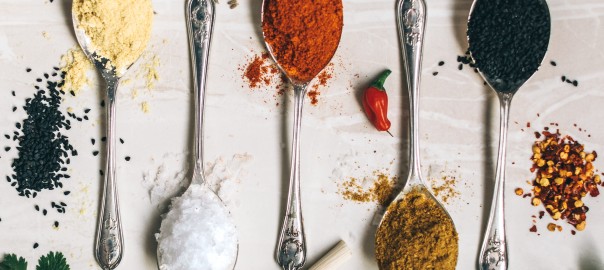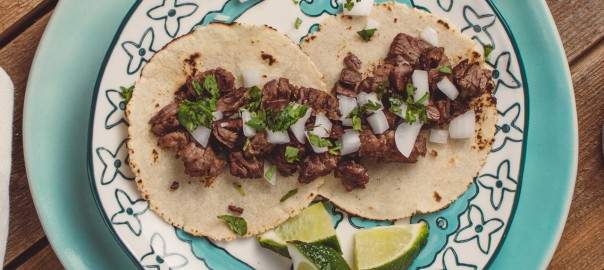You may have taken the first key step towards a month of great eating and ordered a ButcherBox, complete with high-quality grass-fed beef, heritage pork, and free-range, organic chicken.
But do you know what else completes a kitchen? Pantry staples, like high-quality oils, a few kinds of vinegar, dried herbs, and more.
This guide details the pantry essentials that make all the difference when preparing the delicious meals at home. The essentials that all cooks have a hands-length from their stoves include condiments like assorted vinegars, Dijon mustard, and soy sauce or their gluten-free variants. With a few of these, you can make everything from vinaigrettes and dressings to sauces, rubs, and much more.
Other necessary kitchen staples include canned tomatoes, which add richness to stews and soups, and dried herbs like oregano, rosemary, and thyme.
The best part? None of these staples are prohibitively expensive, and your individual purchase will probably last you quite a while.
1. High-Quality Oils
You can’t cook many meals without a cooking fat, and while grass-fed butter, ghee, or tallow might be an option, you should always keep a solid selection of healthy, high-quality cooking oils at hand.
These oils might include high heat friendly options filled with healthy fats, like avocado oil or coconut oil. For lower heat preparations, a solid bottle of olive oil should always be handy. You can even use good olive oil as a finishing touch, like a drizzle over salad or hummus.
Neutral oils like avocado oil or olive oil are also excellent bases for homemade salad dressings, and, if you’re really looking to up your pantry game, keep finishing oils like sesame oil or walnut oil on hand.
2. An Assortment of Vinegar
A good vinegar will take a good dish to great, and thankfully there are many options to choose from.
If you need to add acidic sweetness, reach for balsamic vinegar. In fact, dousing some caramelized red onions with balsamic vinegar and sugar is a sure-fire way to make a quick and delicious topping for burgers and steaks, while aged balsamic vinegar makes the perfect coating for grilled veggies.
Don’t stop at balsamic vinegar. Champagne vinegar adds a sweet note to homemade vinaigrettes, while apple cider vinegar boasts so many purported health benefits it’s hard to keep count. You can even throw it into homemade barbeque sauce for a unique bite.
Even plain old white vinegar has its place in a pantry. It’s as useful for making crispy pickles as making homemade kitchen cleanser.
3. Dijon Mustard
Yellow mustard has its place, but nothing heightens a dish more than a dollop of Dijon mustard. The traditional French mustard is made with brown mustard seeds, white wine, and a verjus made from unripe grapes. This verjus is what gives Dijon mustard its distinct, tart flavor.
Use Dijon mustard in a homemade vinaigrette for a crisp salad, or as part of a rub for various cuts of meat. These rosemary brined pork chops are a perfect example.
The best part about Dijon mustard? While it sounds fancy, it’s a pretty affordable condiment, with the store brand bottles rarely costing more than $3 and the fancy stuff only clocking in at $5 or less.
4. Soy Sauce/Tamari/Coconut Aminos
What’s the best way to build umami into your dishes? Soy sauce, a sauce made from fermented soybeans, roasted wheat, and cultures, is the ultimate, inexpensive umami condiment.
Of course, many people question the nutritional impact of soy sauce. If you’re gluten-free, a specific type of soy sauce, tamari, can be made without gluten.
If you avoid soy and grains entirely, coconut aminos, a sauce made from coconut tree sap and salt, is a great alternative. While a bit less pungent and a tad sweeter than traditional soy sauce, it still packs umami flavor into dishes.
Use soy sauce or any of its alternatives in Asian-inspired fare, like this ginger pork noodle soup.
5. A Solid Hot Sauce
While the hot sauce category is vast, your favorite hot sauce is a kitchen essential. Why? Because it can be doused on most anything and elevates the flavor of whatever you’re noshing on.
Do you prefer Asian flavor profiles? Reach for the less hot, slightly sweet Sriracha, or pack in the chili garlic flavor with sambal.
Mexican and Latin America hot sauces are another great category: The options are many, but most sauces feature some kind of vinegary heat and potentially a kick of citrus like lime.
Channel pure Americana with Tabasco or Louisiana hot sauce. There are, literally, thousands of hot sauces to choose from.
Use your favorite hot sauce to jazz up a simple breakfast of eggs and bacon, or incorporate it into vinaigrettes and sauces for a little kick.
6. Dried Herbs
Like hot sauce, the selection for dried herbs is vast. And while it’s great to build out your spice cabinet and experiment with various herbs, there are a few essentials we’d recommend always having on hand.
Dried oregano, basil, rosemary, and thyme — commonly sold together as an Italian seasoning blend — lend bright flavors to any dish you whip up and are much more convenient in a pinch than fresh herbs.
Other dried herbs we’d consider staples include dill, which is perfect in anything from pickles to salads, and dried bay leaves, which lend depth to soups and stews.
If you’d really like to pad out your spice cabinet, add dried marjoram, ground coriander, dried mint, dried sage, and dried tarragon.
7. Coconut Milk
Canned coconut milk is a treasure, and not just because it’s suitable for most diets. The silky, fatty substance lends richness to any dish it touches, and won’t spoil as quickly as refrigerated alternatives like heavy cream or milk.
Despite it including coconut meat, coconut milk is a fairly neutral, non-dairy way to add creaminess and heft. Use coconut milk to add creaminess to soup, braise meats, or add silky texture and flavor to rice.
Pro tip: Stock up on cans of coconut milk. Whichever ones you don’t use for savory dishes, use them to make dairy-free sweets like no-churn ice cream.
8. Nut and Seed Butters
What’s your favorite? Peanut butter, almond butter, cashew butter, tahini? Whichever nut or seed butter you prefer, it’s bound to serve many uses in your kitchen.
You can, of course, use nut butters to spread on toast, add protein to smoothies, and bake up some delicious cookies. But nut butters have serious culinary uses, too.
Peanut butter or almond butter both make excellent Asian-inspired sauces, like in this Thai almond soba noodle salad. Tahini tastes delicious in Mediterranean fare. Try it drizzled over these Mediterranean meatballs.
9. Canned Tomatoes
Whether you’re whipping up a sauce for pasta, throwing some chili in the crockpot, or cooking up beef stew or pot roast low and slow, canned tomatoes are so useful.
You can find canned tomatoes in many forms, from canned tomato paste to whole, peeled tomatoes in a can. It’s good to have a variety of these options on hand for whatever you may need. They’re inexpensive and can add flavor to nearly any dish, like this fennel and tomato Italian pork shoulder.
10. Good Salt and Black Pepper
It’s a bit of a given that you should have salt and pepper on hand. It’s rare to not add it to a dish in the kitchen. But not just any salt or pepper will do.
Iodized table salt is the most common option, but it’s not exactly the healthiest one. It’s bleached, devoid of trace elements, and often contains additives. Also, it just doesn’t taste as good as sea salt crystals.
Sea salt comes from the ocean, and is evaporated to separate the salt crystals from the water.
(Another option: ButcherBox Chef Yankel always recommends having Kosher salt on hand for seasoning steaks.)
For pepper, whole peppercorns that can be cracked in a pepper mill lend the best flavor.





